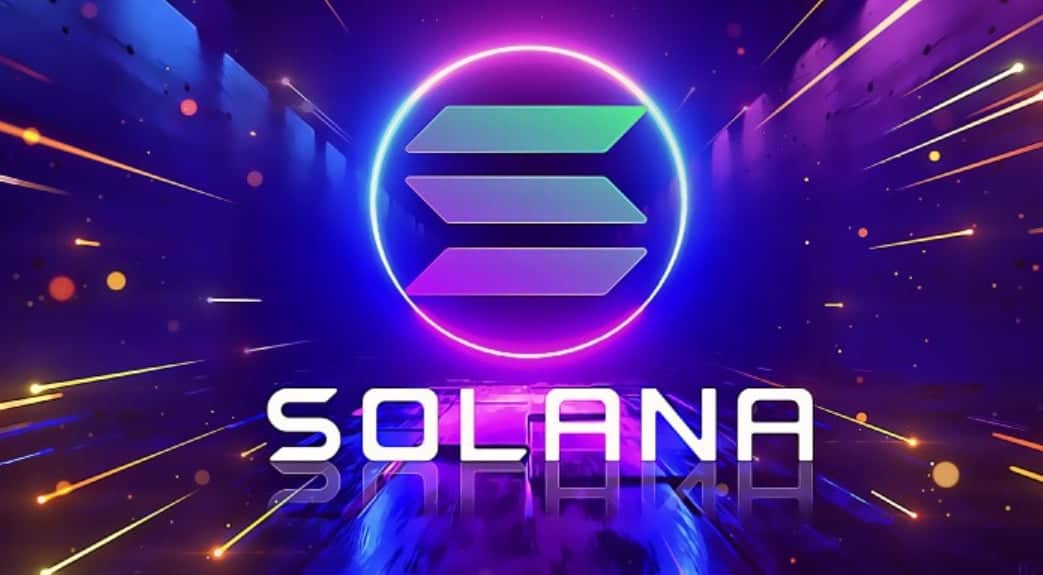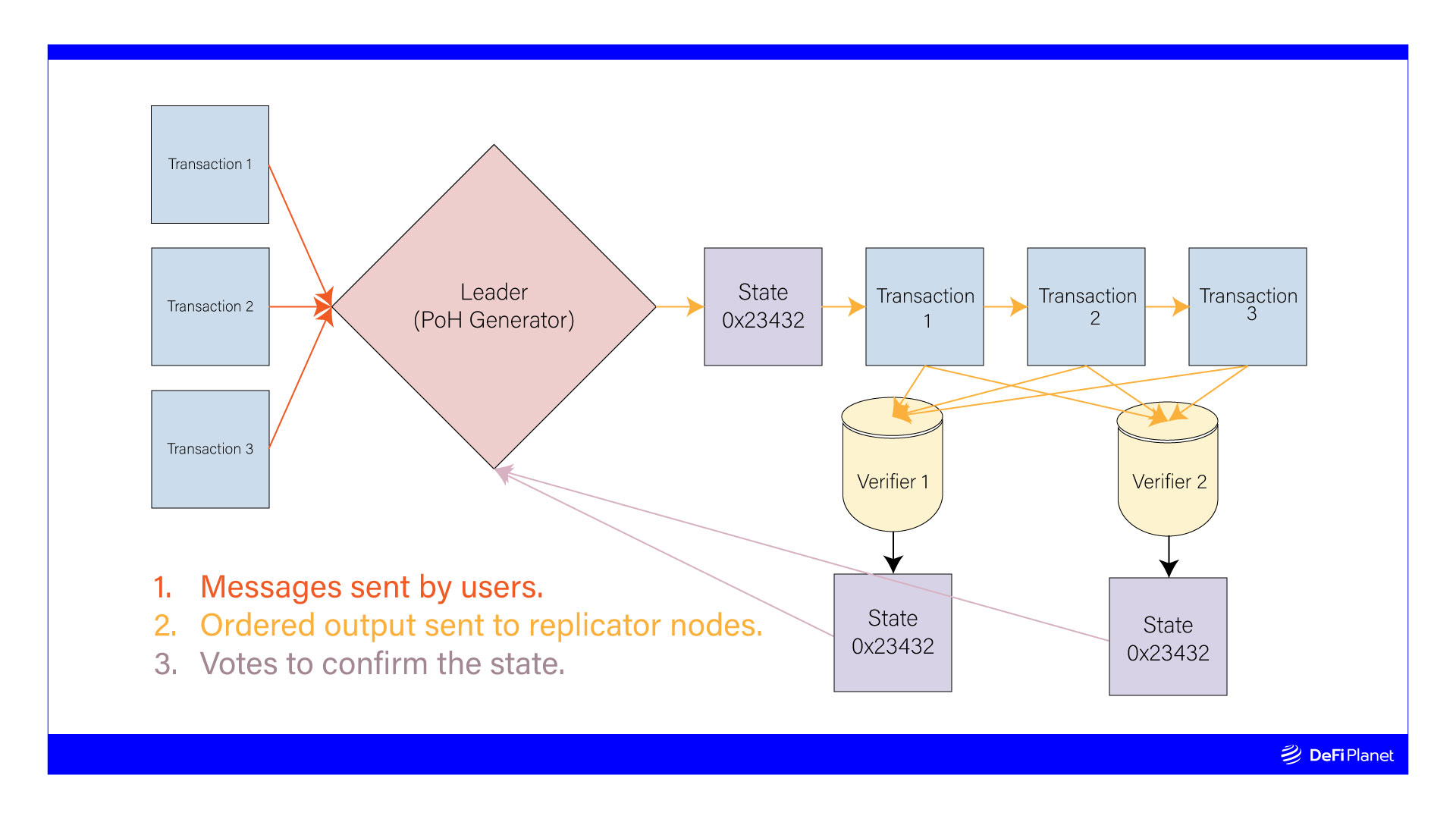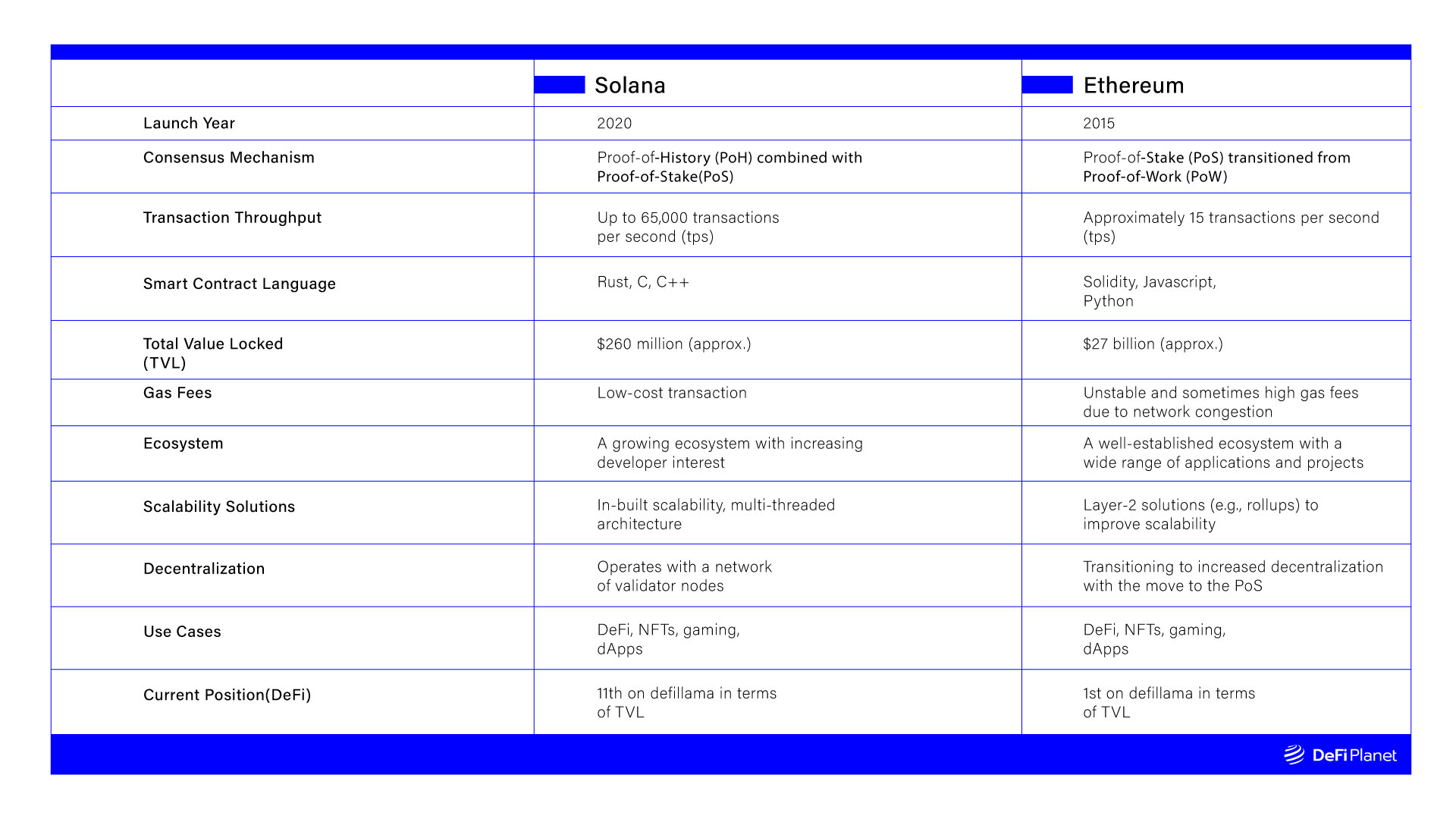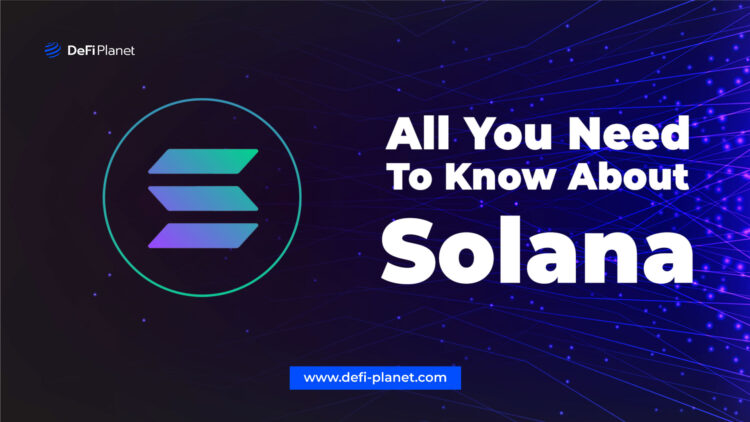Last updated on August 11th, 2023 at 07:56 pm
Beyond the mainstream success of Bitcoin and Ethereum, the blockchain world is home to a trove of remarkable networks. While some of these networks focus on enhancing the usability of existing blockchains, others are dedicated to solving real-world challenges that demand effective blockchain solutions.
Solana epitomizes the convergence of addressing real-world problems and surpassing the limitations of its predecessors, boasting significant advancements since its inception in 2017.
Often acclaimed as the “Ethereum killer,” Solana distinguishes itself through unparalleled transaction processing speed, outpacing both Ethereum and Bitcoin.
In April 2023, Solana’s NFT trading volume reached a jaw-dropping $90 million, second only to Ethereum during that period.
Solana’s appeal lies in its cost-effectiveness for various blockchain applications, with transaction fees averaging $0.00025 per transaction, enabling users to execute up to 4000 transactions with just $1 in gas fees.
Furthermore, Solana’s innovative approach to blockchain consensus fosters scalability, an enhancement that has significantly reinforced its adoption across the industry.
Currently, the total value locked (TVL) in Solana’s DeFi ecosystem amounts to $260 million, a testament to its burgeoning presence in the DeFi space. However, it is noteworthy that this figure represents a substantial decline from Solana’s peak TVL of $10 billion in November 2021.
This article delves into the intricacies of the Solana network, shedding light on its unique consensus mechanism and other notable features and products within its ecosystem.
What Is Solana?

Solana is a Layer 1 blockchain known for its strong emphasis on speed and scalability. Its impressive transaction processing capacity of up to 65,000 transactions per second (tps) makes it one of the fastest public blockchains.
Anatoly Yakovenko, a software engineer, initiated Solana’s development in 2017. Since then, the project has undergone continuous expansion through coordinated efforts from various stakeholders.
The Solana ecosystem is managed by two organizations: The Solana Foundation, a non-profit based in Zug, Switzerland, oversees the ecosystem, while Solana Labs, headquartered in San Francisco, California, is responsible for developing the Solana network.
The Solana Ecosystem: How Solana Works
Solana was developed to achieve higher transaction throughput than blockchain networks like Ethereum and Bitcoin, which typically handle around 20 and 7 transactions per second (tps).
What sets Solana apart is its high throughput without relying on scaling solutions or sharding.
According to its whitepaper, Solana is designed as a high-performance and low-latency platform for building decentralized applications (dApps). It introduces a unique consensus mechanism called Proof-of-History (PoH), which works in tandem with Proof-of-Stake (PoS) consensus.
This combination of PoH and PoS enables Solana to scale efficiently, allowing the network to process multiple transactions in parallel and achieve an impressive throughput of 65,000 tps.
Solana Proof-of-History (PoH)

Anatoly Yakovenko explained in the project’s whitepaper that the Proof-of-History (PoH) mechanism relies on timestamps to verify activities in decentralized networks.
PoH establishes a reliable order of events in a decentralized network using timestamps. Nodes in the Solana network utilize a unified cryptographic clock for consensus on event sequencing.
In PoH, a leader node performs a computationally intensive calculation to generate timestamps, which are easily verifiable. These timestamps are then distributed across the network to establish a consistent order of events, protected from tampering through cryptographic hashing.
Compared to Proof-of-Work (PoW), this consensus mechanism is more energy-efficient, as only the leader node handles the heavy computation, rather than burdening every other node on the network.
Solana’s PoH works alongside a Proof-of-Stake (PoS) consensus mechanism, where leader nodes are selected based on the amount of SOL staked and their on-chain reputation.
PoH brings multiple benefits to Solana, including fast transaction processing, reduced reliance on time-consuming consensus algorithms, and improved scalability and efficiency in handling a large volume of transactions securely.
It’s important to note that PoH does not directly verify transactions on Solana. Instead, it timestamps transactions, providing a reference point for event ordering. Transaction validity is determined through the underlying PoS consensus, where nodes agree on the legitimacy of network transactions.
Solana Virtual Machine (SVM)

The Solana Virtual Machine (SVM) is the foundation for creating decentralized applications (dApps) on the Solana network. Developers must be proficient in Rust programming to write smart contracts and effectively deploy dApps on Solana using SVM.
Similar to Ethereum’s EVM, SVM offers a robust runtime environment. However, SVM surpasses in performance due to its multi-threaded architecture, enabling simultaneous processing of tens of thousands of transactions.
This makes the Solana network more scalable and keeps gas fees fair. Each validator node in the Solana network operates its own SVM, which helps the network stay decentralized and reach consensus among nodes.
Solana’s SOL Token
Solana utilizes its native token, SOL, for transactions within the network while also serving a vital role in network security through staking by validators and as a reward for securing the network.
Upon Solana’s launch in March 2020, 500 million SOL tokens were released, with the maximum supply unspecified.
Distribution details indicate that 16.23% of SOL tokens were allocated to an initial seed sale, 12.79% were held by the team, 12.92% went to a founding sale, and 10.46% allocated to the Solana Foundation, with the remaining tokens available through public and private sales.
SOL is trading at $25.21, representing a significant 92% decline from its peak value of $260 in November 2021. However, CoinMarketCap data shows SOL has experienced a substantial price appreciation of over 9,000% since its launch.
How To Buy $SOL
The SOL token is available for trading on both decentralized and centralized exchanges. Decentralized exchanges (DEXs) like Orca allow users to purchase SOL using Solana-supported wallets such as Phantom or Solflare. To transact on DEXs, you need some SOL balance to cover gas fees.
Centralized exchanges such as Binance and Bybit offer a simpler method to buy SOL tokens. However, holding SOL on a centralized exchange means trusting the custody of your tokens to the exchange.
In any case, purchasing SOL from a centralized exchange and then transferring it to a self-custody wallet for use within the Solana ecosystem is a more convenient approach.
Key Features and Capabilities of Solana
Fast and Low-Cost Transactions
Solana’s unique combination of Proof-of-History (PoH) and Proof-of-Stake (PoS) consensus mechanisms ensures both speed and security in transaction verification, making it suitable for real-time transaction processing.
The network processes transactions rapidly and offers near-zero transaction costs.
Scalability & Versatility
Solana is a highly scalable and versatile public blockchain. It achieves scalability directly on its network without relying on scaling solutions like rollups. This Web2 design approach enhances user experience and enables developers to use the blockchain without incurring additional costs.
These features make Solana an attractive choice for building different decentralized applications (dApps) and fostering a more inclusive ecosystem.
Smart Contract Support
Solana supports smart contracts through the Solana Virtual Machine (SVM), empowering developers to write and deploy decentralized applications (dApps) with advanced functionalities.
Solana vs Ethereum
The table below compares key aspects of the Solana and Ethereum networks.
Figure 1: Comparing Solana and Ethereum

Challenges
The Solana network has encountered significant challenges impacting its reliability, leading to the departure of developers and funds. The two most consequential include recurring downtime and its connection to the FTX crash.
Solana Downtime
Occasional outages have disrupted the Solana network, rendering it unusable for end-users and developers. Throughout 2022, over 10 outages occurred, raising concerns about the blockchain’s reliability.
The most recent outage in February 2023 further questioned the network’s stability and availability for use cases requiring consistent and reliable data processing.
Solana’s and its Connection to the FTX Saga
Another setback for Solana was the crash of FTX, a significant player in its ecosystem. The FTX event caused Solana to drop from the top 10 DeFi networks, currently holding the 11th position per defillama data.
Solana Labs raised over $300 million in funding in August 2021, with FTX and Alameda Research as major investors, both now bankrupt. They collectively held about 10% of the total SOL supply. FTX’s former CEO, Sam Bankman-Fried, actively supported the Solana ecosystem, including the development of the Serum decentralized exchange (DEX).
However, following the collapse of FTX and Alameda Research in November 2022, a significant amount of funds exited the Solana ecosystem, raising concerns about its future.
Key projects, such as Yuga Labs Y00ts‘ and DeGods’ NFT projects, migrated to other networks like Polygon and Ethereum, exacerbating these doubts. Before the migration, these projects accounted for up to 70% of the trade volume for Solana NFTs.
Solana’s Future Prospects
Solana shows strong potential for success with its fast transaction processing and low gas fees, appealing to developers and end-users.
The Electric Capital developer report from January 2023 indicates an impressive 83% growth in Solana network developers, signalling a thriving ecosystem and promising future despite past challenges. This growing interest in developers hints at Solana’s potential for future success.
However, maintaining a reliable and consistent network suitable for public use is crucial for its long-term sustainability and to attract developers to build innovative dApps, potentially driving the value of the SOL token to new heights comparable to its 2021 peak.
In Conclusion,
- Solana has established itself as a formidable contender in transaction processing speed and scalability, surpassing industry giants like Bitcoin and Ethereum. Its innovative Proof-of-History consensus enhances performance and sets it apart from competitors.
- While Solana has made significant progress, it still faces the challenge of matching Ethereum’s adoption and developer activity. The contrast in Total Value Locked between the two networks underscores Solana’s uphill battle to gain recognition and usage.
- Nevertheless, with its impressive capabilities and growing developer interest, Solana’s future holds immense potential. As the network continues to refine its offerings and attract more projects and users, it could become a viable alternative to Ethereum.
Disclaimer: This article is intended solely for informational purposes and should not be considered trading or investment advice. Nothing herein should be construed as financial, legal, or tax advice. Trading or investing in cryptocurrencies carries a considerable risk of financial loss. Always conduct due diligence.
If you would like to read more articles like this, visit DeFi Planet and follow us on Twitter, LinkedIn, Facebook, Instagram, and CoinMarketCap Community.
“Take control of your crypto portfolio with MARKETS PRO, DeFi Planet’s suite of analytics tools.”





















